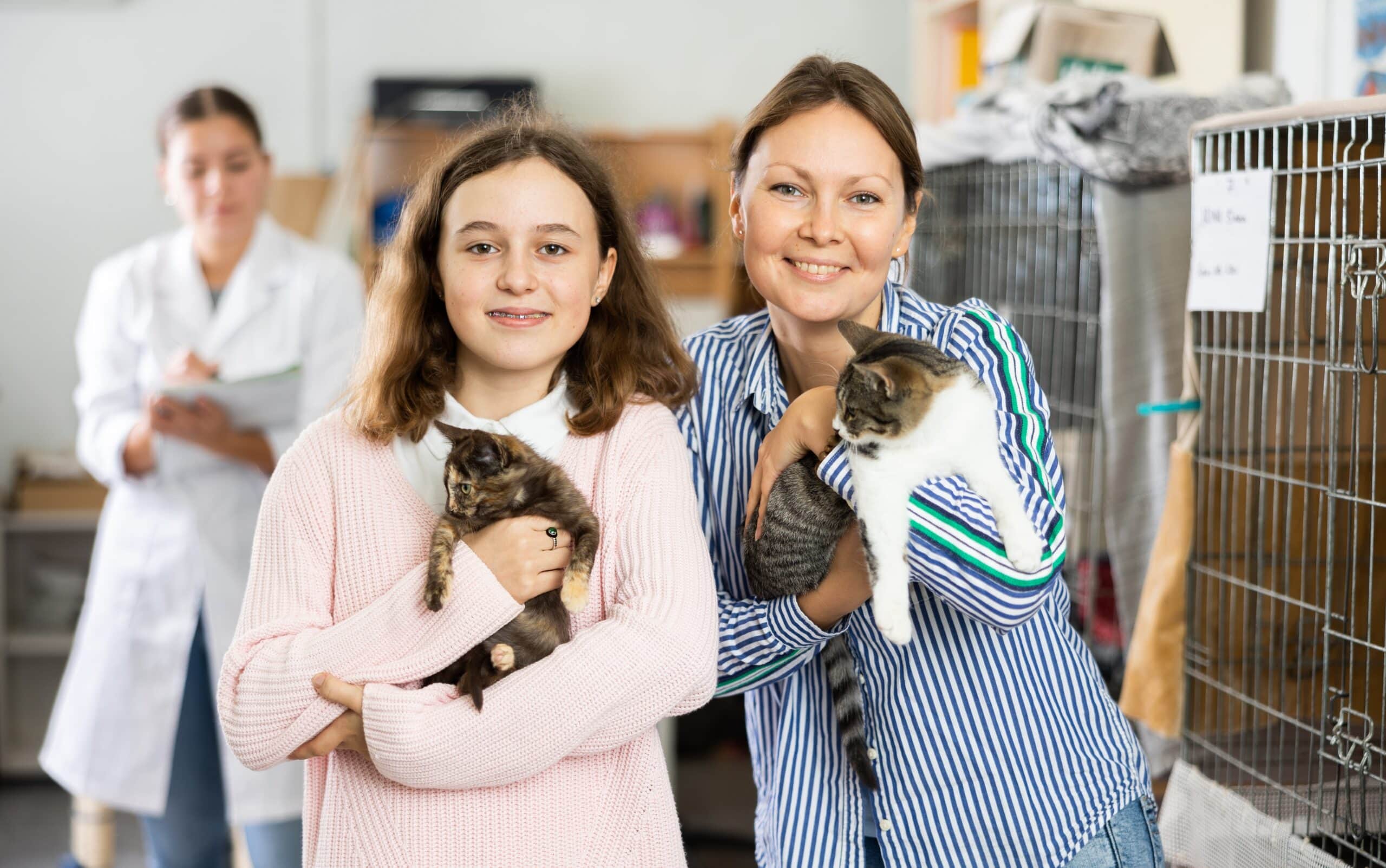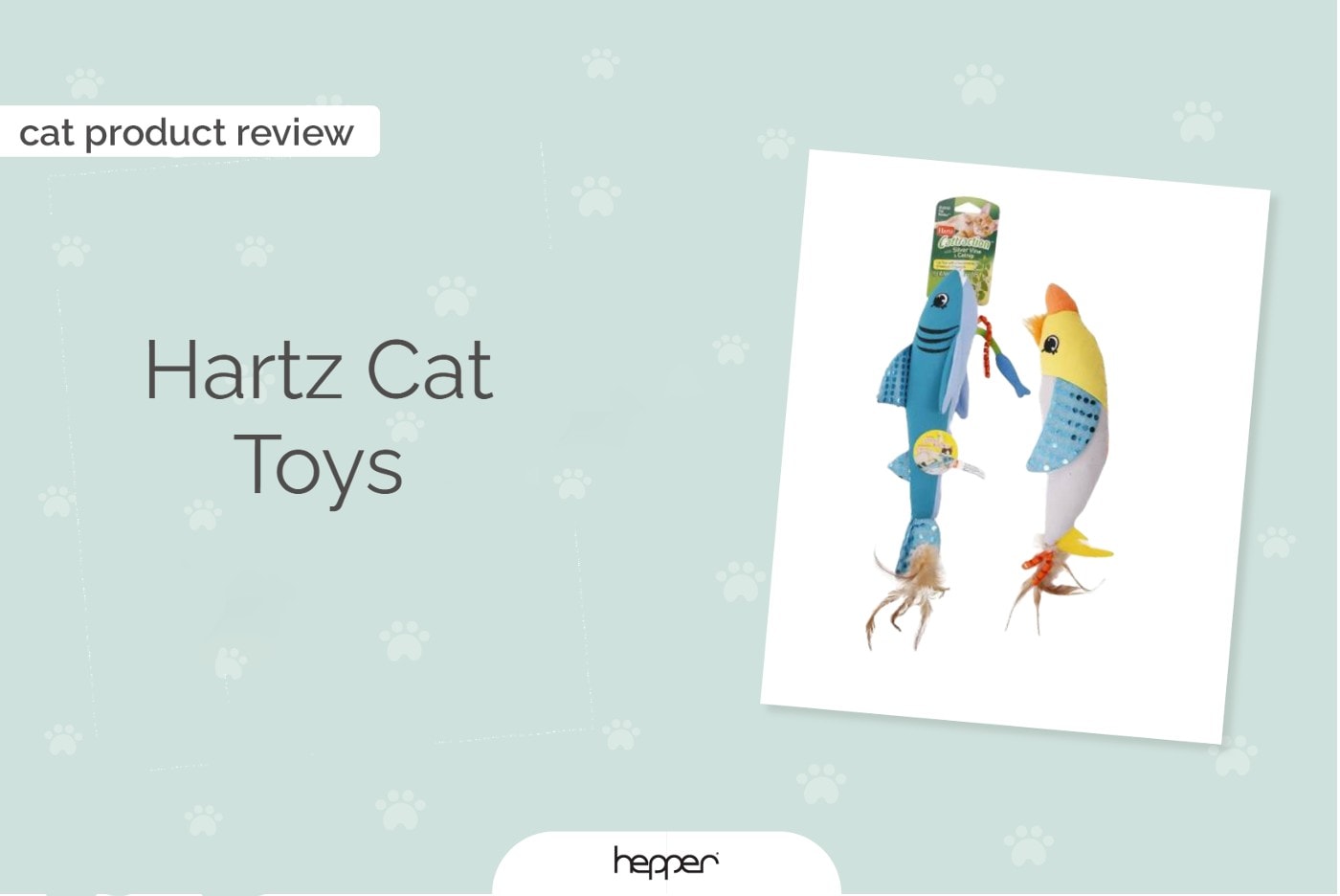Why do Cats’ Pupils Get Big? Vet-Approved Facts

Updated on
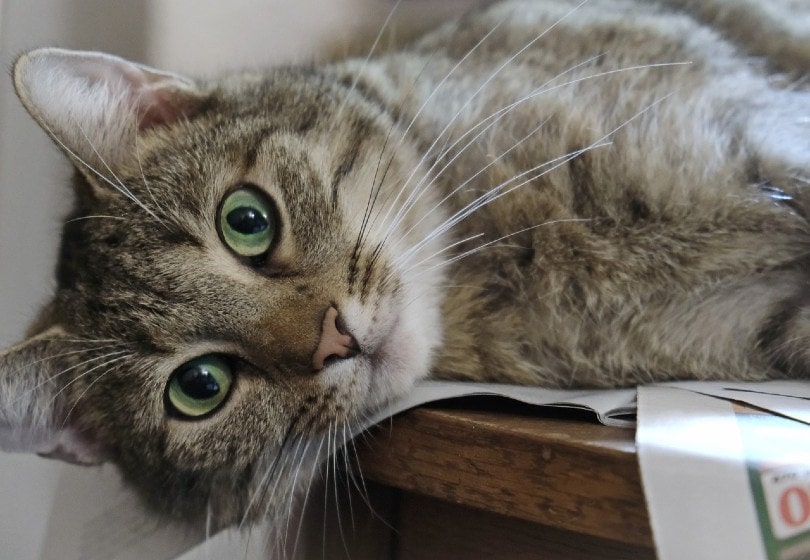
Cats can come off as standoffish and be hard to read. Like other animals and pets, body language is essential to communication. Apart from body language, cats also use their eyes to express themselves.
Unlike dogs, cats don’t have expressive faces, making it harder to tell the meaning behind their eyes. The non-verbal communication cues involve the tail and facial features. However, the cat’s pupils are critical because apart from responding to the light level in a room, they also give you a good sense of how your cat is feeling emotionally and physically.
In the complex world of feline body language, widened pupils say a lot. So let’s take a closer look at the meaning of cat eyes.
The 6 Common Reasons Why a Cat’s Pupils Get Big
The occasional dilation of cat eyes can result from emotions, environmental factors, or even age. It is normal for pupils to dilate and constrict to improve vision. On the other hand, some medical conditions contribute to constant dilation.
Cats are naturally crepuscular, and their eyes are highly sensitive to light. Their pupils will dilate dramatically to get the most from low-light conditions. These characteristics make cats’ pupils appear large at night.
If your cat’s pupils dilate periodically and as the light around them changes, this is normal. However, if you notice your cat has large pupils that stay dilated all that time, it’s a cause for concern.
1. Better Vision
Pupils dilate due to the nature of their eyes. Like in humans, the pupils will dilate in the dark. The black circle in the middle of the eye controls how much light is allowed into the eye. In the dark, the pupil will widen to let more light in.
Cats can see much better in low light conditions, thanks to their pupils dilating and letting as much light into their eyes as possible. Because of this high sensitivity to light, your vet will use a bright light to test the eye function during medical check-ups. If the pupil doesn’t constrict, this is a clear indication that there is an underlying problem.
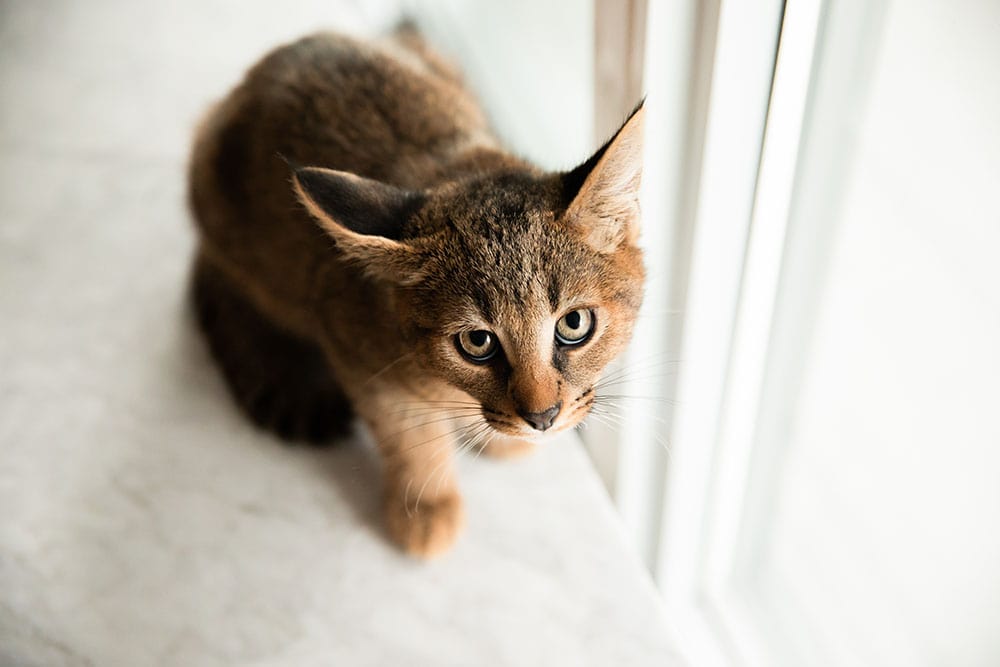
2. Surprise or Fear
A cat’s pupils can widen out of surprise and fear. So, if you notice the pupils get suddenly dilated, it could indicate they got surprised or are scared. This could be from a sudden appearance of a visitor that they were not expecting, a loud noise, or the sighting of another pet outside.
Apart from the adrenaline rush, the pupils dilate until they settle down. Therefore, if you notice your cat is going through this, it’s better to leave them for a while until they realize they are in a safe place and settle down.
3. Excitement
Dilated pupils and big eyes are not always a sign of bad things. Your cat might just be excited about something.
Your pet might be happy because they got their favorite treat or are about to play with their favorite toys. Cat’s eyes dilate when they are playing because of the adrenaline pumping around their bodies.
4. Hunting in the Dark
When hunting prey, especially at night, cats need to be alert and fearless. The adrenaline rush also makes their pupils dilate.
As natural hunters, they have wide pupils and large eye lenses that let them collect information about their surroundings. These characteristics kick into action at night even more, widening their eyes to allow better vision.
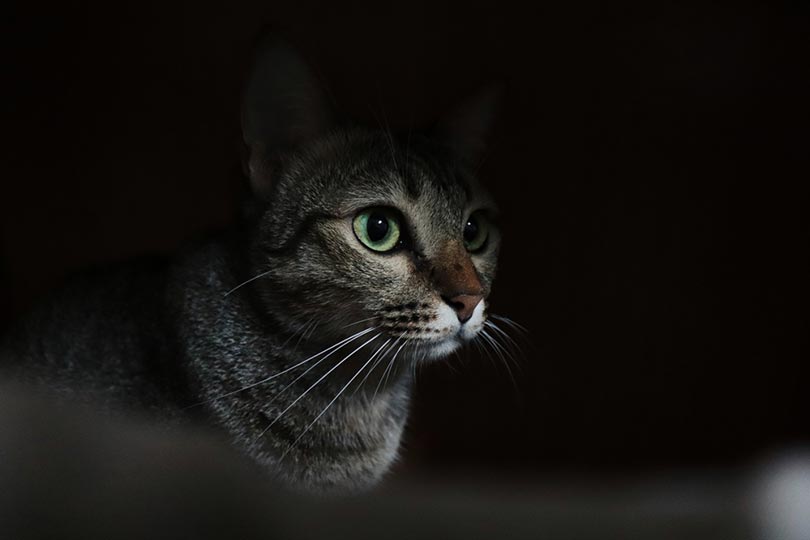
5. Defensiveness
If your feline friend has large pupils, they might be going into a defensive mood. If they feel threatened by another animal or human being, they’ll tend to become aggressive, which can lead to scratching and biting.
The “flight or fight” response is also prominent during hunting sessions. Therefore, if you feel your cat is in defensive mode, it’s best to also give it time to cool off.
6. Anxiety
Wide cat pupils also indicate anxiety. When your cat is tense, you’ll notice one or all of these signs, hunched back, tense tail on its side, lowered head, and huge eyes. For instance, this can happen when your pet is nervous at the vet’s office or during heavy thunderstorms.
If your pet gets exposed to long periods of high stress, you’ll need to ease them into a new environment where they feel safer in the house.
Medical Conditions That Cause Dilated Pupils
While your cat’s pupils dilate for multiple reasons on a normal day, fixed and dilated pupils are usually due to a medical condition. It’s normal for the eyes to be in a neutral state where they are neither overly constricted nor over-dilated.
Here are some of the common reasons why your cat’s pupils are always dilated:
Hypertension
Hypertension in cats is one of the leading causes of dilated pupils. Cats with kidney disease or hyperthyroidism are highly prone to this condition. A consistent reading of more than 160–180mmHg is indicative of hypertension in cats.
Hypertension needs to be diagnosed and treated early enough. Otherwise, it can cause the retina to detach and lead to blindness, causing your kitty to have fixed and dilated pupils. Feline hypertension can be primary, secondary, or situational. The vet will investigate the reasons behind your cat’s high blood pressure and prescribe medication depending on the underlying problem.
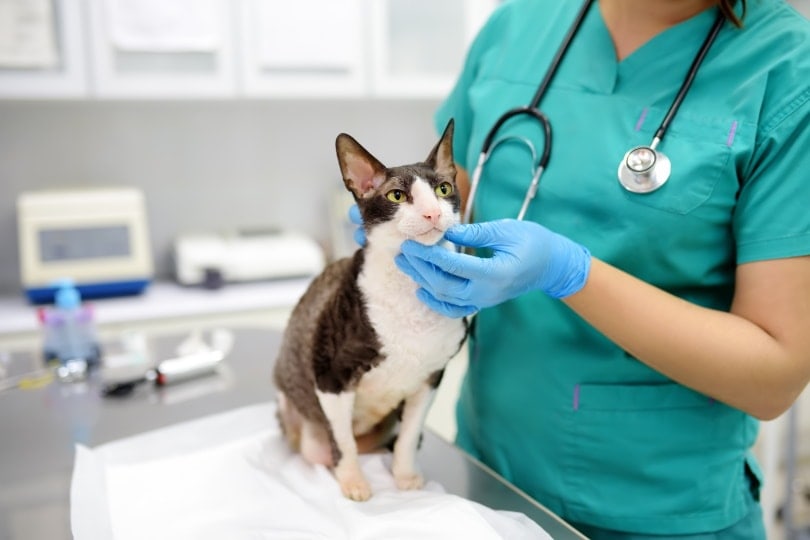
Anisocoria
This condition occurs when your cat’s eye pupils are in different sizes. In this case, only one eye is constantly dilated. It can be hard to know if the normal pupil is the one that is dilated or narrowed. Anisocoria is always a sign of illness, and a trip to the veterinarian is a must. It can result from corneal ulcers, glaucoma, retinal diseases, cancer in the eye, head trauma, ear disease, or exposure to chemicals and toxins.
Because of this, the treatment of this medical condition will depend on the underlying cause. For example, if the cat has glaucoma or a corneal ulcer, the treatment will be very different.
No matter the cause of the anisocoria, it’s critical to visit the vet for medical advice. They might recommend a veterinary ophthalmologist or neurologist for further diagnostic testing. Full recovery will depend on the extent of the underlying condition.
Blindness
Blind cats may have constantly dilated eyes. Apart from the big pupils, your cat might be experiencing loss of vision if they are reluctant to move, constantly bump into objects, or are clumsy around the house.
If you suspect your cat is losing their vision, take them to the vet to get treated immediately. The blindness could become permanent or could be temporary due to retinal or neurological problems.
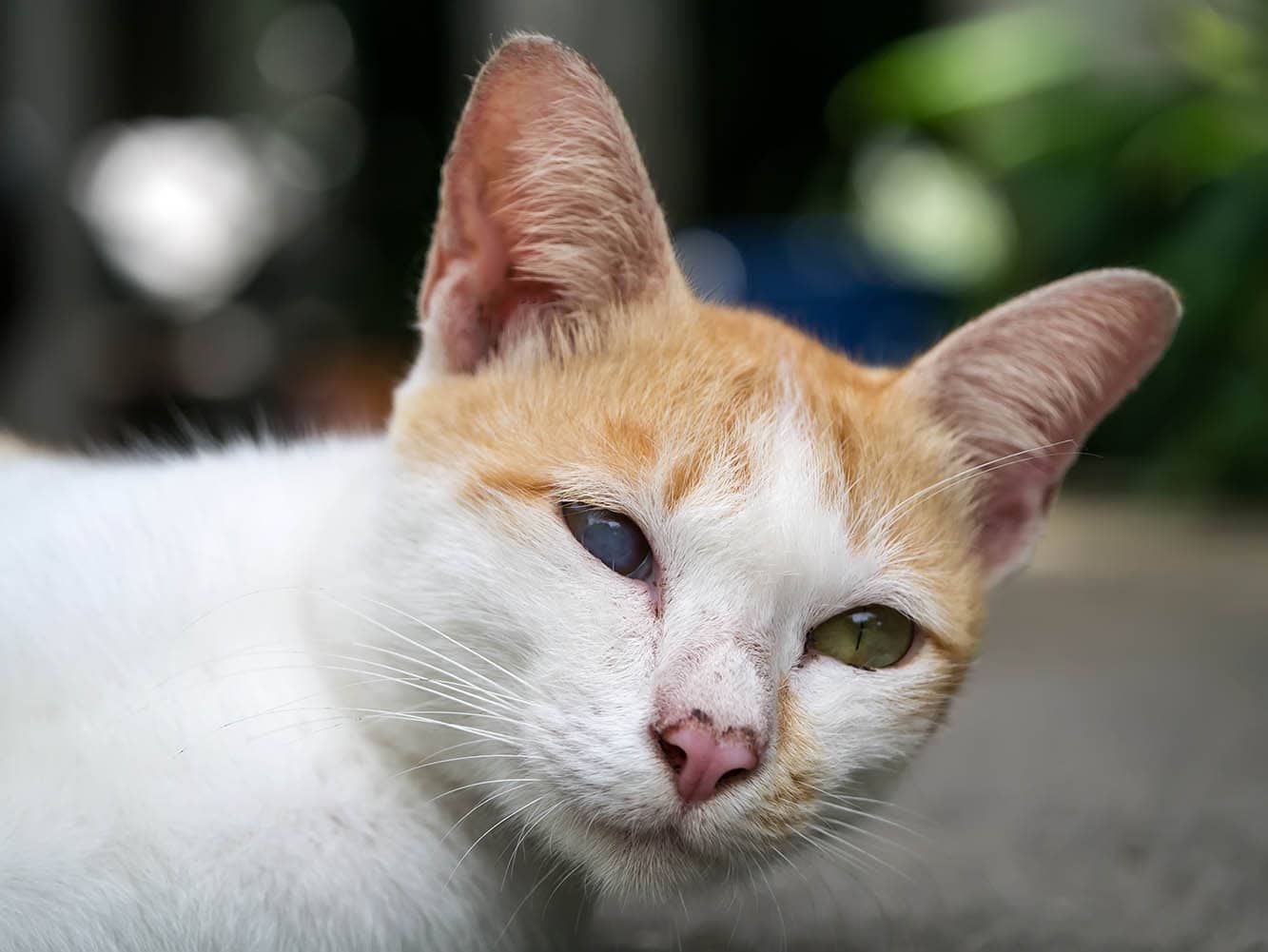
Feline Dysautonomia
Feline dysautobimia is a rare medical condition that affects your cat’s autonomic nervous system (ANS). This system is essential because it controls all the automatic functions in the body, such as respiration, heart rate, arousal, digestion, blood pressure, and pupil dilation.
If the ANS is not working properly, the pupils will not dilate automatically or respond to light.
This condition is more common in younger cats. They normally show other signs such as lack of appetite, upper respiratory problems, and diarrhea.
Ocular Tumors
If one of your cat’s eyes can’t constrict, they might have an ocular tumor. Ocular tumors can cause dilated pupils, cloudy eyes, or abnormally shaped or colored eyes.
Whenever you notice a change in your cat’s eyes, you should contact your veterinarian immediately. If they suspect an eye tumor, they will probably recommend a visit to a veterinary ophthalmologist so that they can do the necessary tests to understand the extent and severity of the problem. With this information, they will create a treatment plan based on your cat’s needs. Unfortunately, the cat’s eye may have to get removed in severe cases. In this worst-case scenario, cats can adapt and live happily with only one eye.
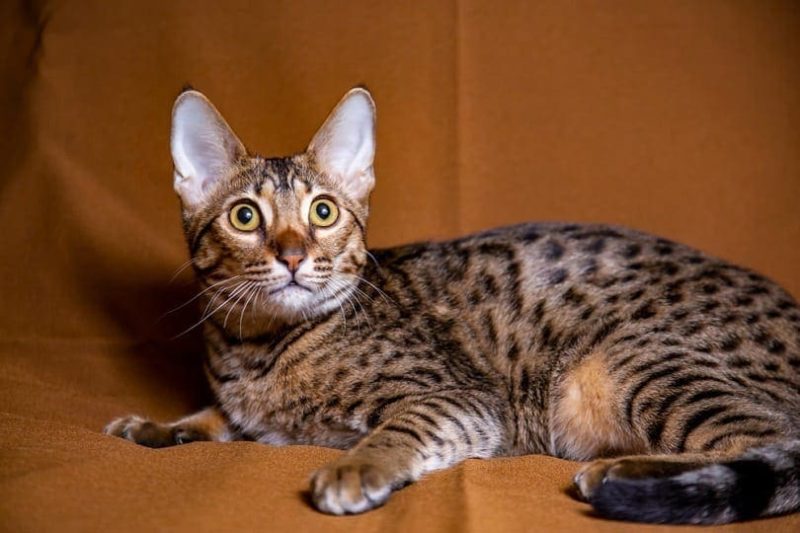
Iris Atrophy
Iris atrophy is mostly associated with old cats. This age-related condition makes the muscles in the iris, the colored part surrounding the pupil, become thin and weakened.
The iris is an essential part of the eye as it gives the eyes a beautiful color and helps the pupil contract and adjust to the light. When the muscle thins out, it becomes harder to constrict the pupil, and the eye remains wide.
This condition does not cause pain or long-term vision problems. However, your cat will become more sensitive to bright light. Despite this, it’s still vital to take your cat to the vet to rule out any other serious medical conditions such as hypertension, glaucoma, or blindness.
Medication Side Effects
Some cats have wide, round eyes due to the medications they are on. Some painkillers cause the pupils to dilate as a side effect. The only way to determine whether this is the cause is by asking your vet whether this is a possible side effect of your cat’s medication.
In addition, the dilation can be a result of an overdose. If you suspect your cat had more medication than what they should have, speak to your vet immediately.
What Does It Mean When a Cat Stares?
A cat’s stare can communicate what they are feeling. There are different types of cat stares depending on your cat’s emotions. So, let’s take a closer look.
Direct Stare
Cats that hold eye contact or stare you down might feel threatened, might be angry, or might be trying to intimidate you.
You can make the kitty more comfortable by breaking away from the staring and looking away. This reduces their level of anxiety.
When doing the same to other cats or animals, it’s a sign of dominance to try and keep other felines from coming close to its food, litter box, or marked territory.
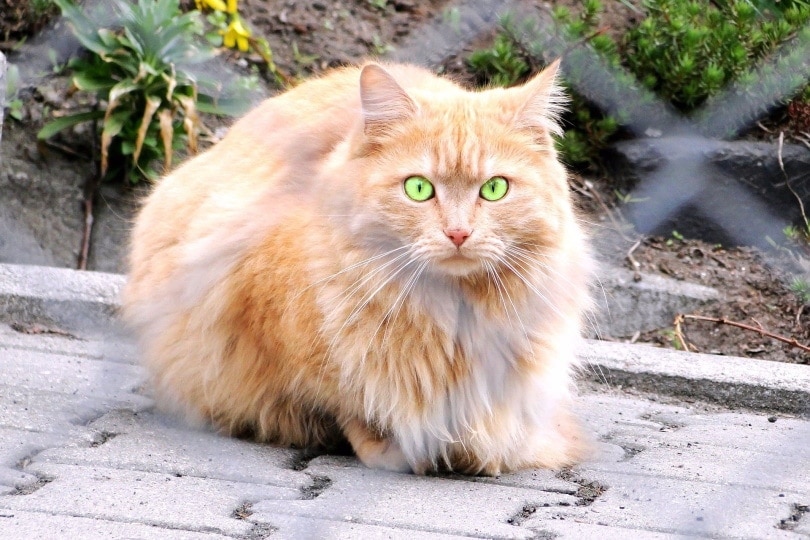
Breaking Eye Contact
A cat that stares for a few moments then breaks eye contact around you is comfortable. This shows they are okay with you around and don’t want to get aggressive.
Calm Stare
The calm stare is a sign of affection. Cats like watching over their human owners in the same way you keep an eye on them.
 What Does It Mean When a Cat Has Slow Blinks?
What Does It Mean When a Cat Has Slow Blinks?
Slow eye blinks are a means to express love and trust. Your cat’s eyes and lids will partially close or droop, and the cat will have a sleepy appearance. To return the affectionate feelings, you should meet your pet’s gaze and blink back.
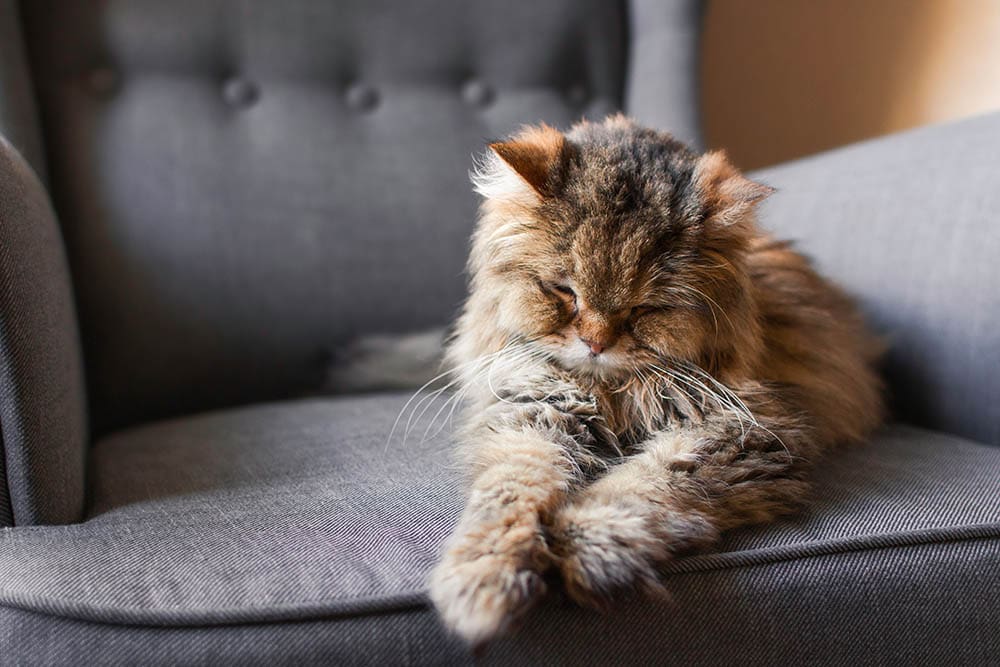
Summary
Feline body language is so confusing to most cat owners. Because cats can’t express themselves verbally, the caretakers have to study their body language to detect any changes.
Cat eyes give away a lot of information about how a cat feels. In addition, veterinarians can use these eye changes to detect other underlying medical conditions.
Although eye pupils widen and constrict under normal situations when exposed to different amounts of light, it becomes concerning when the pupils stay constantly dilated. If your cat’s pupils are permanently dilated, it’s best to take them to a vet for a check-up. When the underlying medical conditions get treated early enough, you can save your pet from blindness.
See also:
Featured Image Credit: driesel, Pixabay





